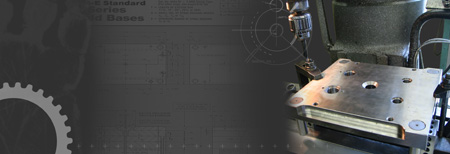
SPI Mold Specifications
GENERAL SPECIFICATIONS
1. Customer to approve mold design prior to start of construction.
2. All molds, with the exception of prototype, to have adequate channels for temperature control.
3. Wherever feasible, all details should be marked with steel type and Rockwell hardness approximately .005 deep.
4. Customer name, part number, and mold number should be steel stamped on mold.
5. All molds should have eyebolt holes on the top side. There should be one above and one below the parting line to facilitate mold removal, if required, in halves.
CLASS 101 MOLD
Cycles: One million or more
Description: Built for extremely high production. This is the highest priced mold and is made with only the highest quality materials.
- Detailed mold design required.
- Mold base to be minimum hardness of 28 R/C.
- Molding surfaces (cavities and cores) must be hardened to a minimum of 48 R/C range. All other details, such as sub-inserts, slides, heel blocks, gibs, wedge blocks, lifters, etc. should also be of hardened tool steels.
- Ejection should be guided.
- Slides must have wear plates.
- Temperature control provisions to be in cavities, cores and slide cores wherever possible.
- Over the life of a mold, corrosion in the cooling channels decreases cooling efficiency thus degrading part quality and increasing cycle time. It is therefore recommended that plates or inserts containing cooling channels be of a corrosive resistant material or treated to prevent corrosion.
- Parting line locks are required on all molds.
CLASS 102 MOLD
Cycles: Not exceeding one million
Description: Medium to high production mold, good for abrasive materials and/or parts requiring close tolerances. This is a high quality, fairly high priced mold.
- Detailed mold design required.
- Mold base to be minimum hardness of 28 R/C.
- Molding surfaces should be hardened to a 48 R/C range. All other functional details should be made and heat treated.
- Temperature control provisions to be directly in the cavities, cores, and slide cores wherever possible.
- Parting line locks are recommended for all molds.
- The following items may or may not be required depending on the ultimate production quantities anticipated. It is recommended that those items desired be made a firm requirement for quoting purposes:
a. Guided Ejection
b. Slide Wear Plates
c. Corrosive Resistant Temperature Control Channels
d. Plated Cavities
CLASS 103 MOLD
*Cycles: Under 500,000
Description: Medium production mold. This is a very popular mold for low to medium production needs. Most common price range.
- Detailed mold design recommended.
- Mold base must be minimum hardness of 8 R/C.
- Cavity and cores must be 28 R/C or higher.
- All other extras are optional.
CLASS 104 MOLD
*Cycles: Under 100,000
Description: Low production mold. Used only for limited production preferably with non-abrasive materials. Low to moderate price range.
- Mold design recommended.
- Mold base can be of mild steel or aluminum.
- Cavities can be of aluminum, mild steel or any other agreed upon metal.
CLASS 105 MOLD
Cycles: Not exceeding 500
Description: Prototype only. This mold will be constructed in the least expensive manner possible to produce a very limited quantity of prototype parts. It may be constructed from cast metal or epoxy or any other material offering sufficient strength to produce minimum prototype pieces.
For more information on how Blackwell Plastics can support your plastic injection molds or extrusion dies, call Project Engineering at 713 643-6577 or click ask an engineer.
